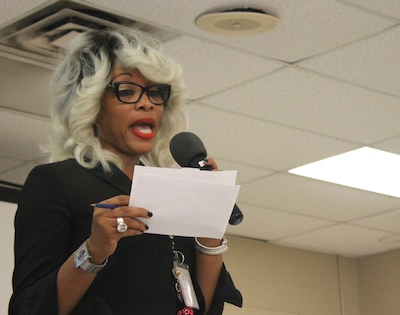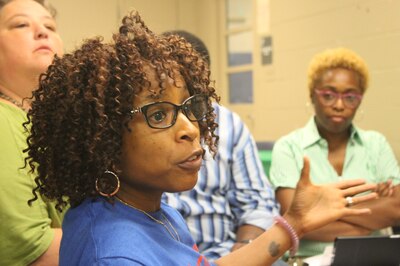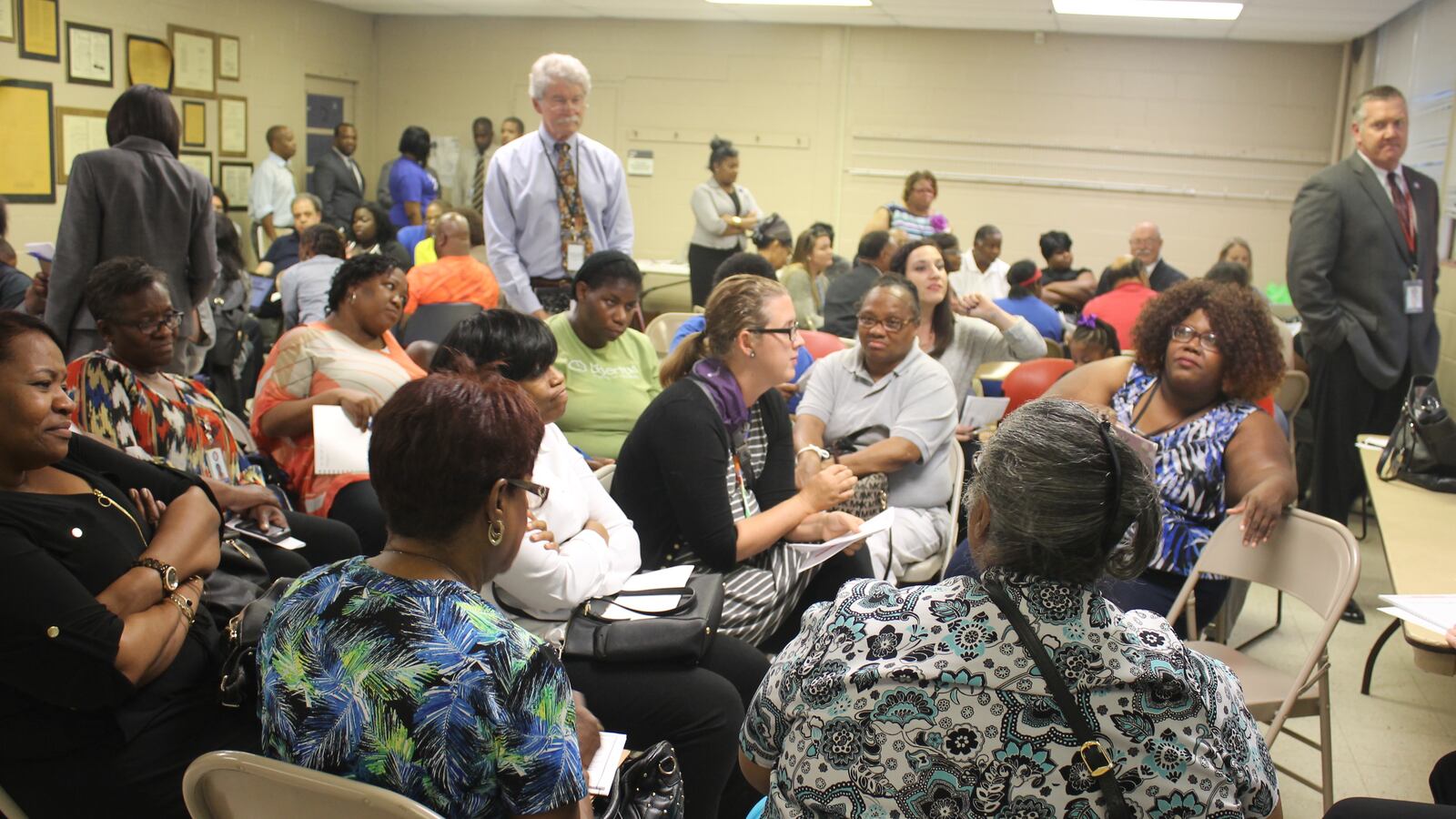Leaders of Tennessee’s largest school district kicked off a series of community meetings Monday by emphasizing the goal of getting input from Memphians on what makes a great school. But another goal that was unstated quickly became apparent: preparing Memphians for inevitable changes that will come as Shelby County Schools restructures itself to make the best use of shrinking resources.

“Unfortunately, we may have to decrease some of our schools so that we can maximize the use of those resources,” said Sharon Griffin, regional superintendent of the district’s Innovation Zone, speaking to a crowd of about 80 people in Frayser. “And even though many of our schools are showing academic gains, some of those schools will still have to merge.”
To read our coverage on Memphis school closures, visit here.
Monday’s meetings at Frayser and Cordova were the first of nine gatherings — one in each school board district — as the district prepares for seismic shifts three years after a historic school merger and two years after the exit of six municipalities creating their own school systems. Superintendent Dorsey Hopson has said Shelby County Schools will need to close up to 24 schools over the next five years — a plan that will be guided in large part by a year-long facilities study scheduled for release later this month.
School board member Stephanie Love clarified Monday evening that the study will serve as a status report of buildings and enrollment and will not include specific recommendations on which schools to close, merge or refigure.
The gatherings are part of the district’s effort to thaw community relations when it comes to input for big decisions, particularly related to closing schools.
“A lot of times we don’t give you the opportunity to give input. We make decisions and then we come back and tell you to live with it,” Love told attendees. “Well, we’re going to dispel all of that. Moving forward, before we make any decisions, we’re going to meet with the community. We’re going to talk to the community. We’re going to listen to the community.”
The crowd at the Frayser meeting was comprised mostly of teachers and central office staff, along with some parents and community members. They were broken into small groups to discuss what makes a high-quality school and how to make existing schools better.
The feedback will be incorporated into recommendations to the school board about which schools will be left standing and how to increase enrollment amid shrinking resources and increased competition from charter schools and other options.

“I’m here to use my voice to stand up for education and for my school and school community,” said Judy Walker, a librarian at Northaven Elementary School. “Change is coming, and decisions will have to be made.”
Some were skeptical about whether or not their voices will matter in the end.
“You have to be assured they are going to incorporate what I say in what you’re going to do,” said Leonard Smith, a retired educator. “But that hasn’t been a part of this administration.”
“It’s a good start if something’s done with the information,” said Sharon Fields, family coordinator at Libertas School of Memphis, a school under the state-run Achievement School District. “If it’s not utilized, it’s a smokescreen.”
Robocalls notified faculty and families about the community meetings as the district announced the dates last week on its website, though no specifics were provided about which schools could be on the chopping block.
The school system also released a video Monday outlining the district’s strengths, challenges and choices as part of its “Great Schools, Greater Community” campaign. Narrated by Hopson, the video invites the community to start “thinking differently” to make the most of limited resources.
Love reiterated that a new way of thinking must happen to address shrinking enrollment, decreasing funding, low-performing schools and a large number school buildings with dire capital needs.
“Reality is something is going to have to give to improve the education of our children,” she said.

